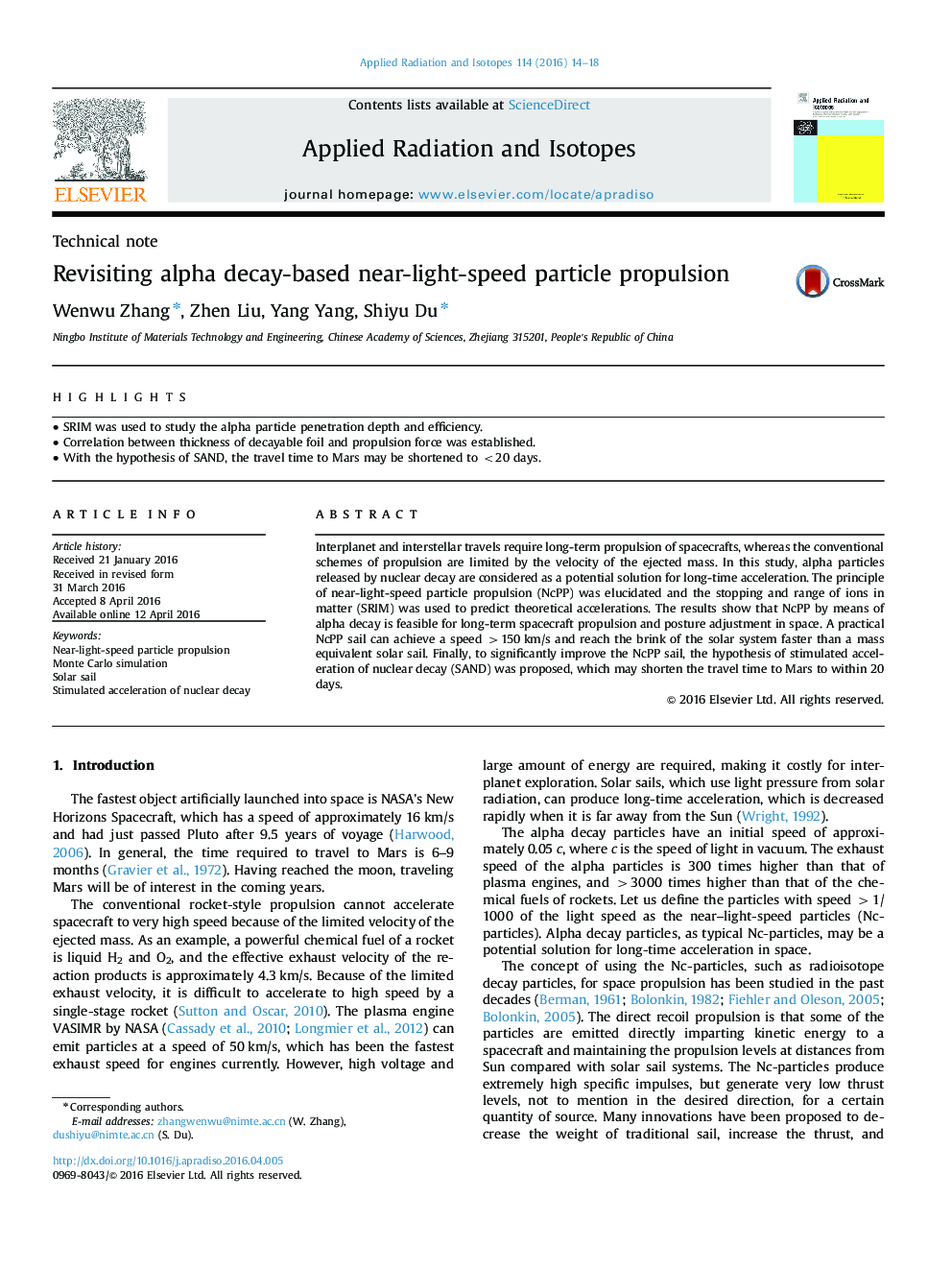| Article ID | Journal | Published Year | Pages | File Type |
|---|---|---|---|---|
| 8209115 | Applied Radiation and Isotopes | 2016 | 5 Pages |
Abstract
Interplanet and interstellar travels require long-term propulsion of spacecrafts, whereas the conventional schemes of propulsion are limited by the velocity of the ejected mass. In this study, alpha particles released by nuclear decay are considered as a potential solution for long-time acceleration. The principle of near-light-speed particle propulsion (NcPP) was elucidated and the stopping and range of ions in matter (SRIM) was used to predict theoretical accelerations. The results show that NcPP by means of alpha decay is feasible for long-term spacecraft propulsion and posture adjustment in space. A practical NcPP sail can achieve a speed >150Â km/s and reach the brink of the solar system faster than a mass equivalent solar sail. Finally, to significantly improve the NcPP sail, the hypothesis of stimulated acceleration of nuclear decay (SAND) was proposed, which may shorten the travel time to Mars to within 20 days.
Keywords
Related Topics
Physical Sciences and Engineering
Physics and Astronomy
Radiation
Authors
Wenwu Zhang, Zhen Liu, Yang Yang, Shiyu Du,
